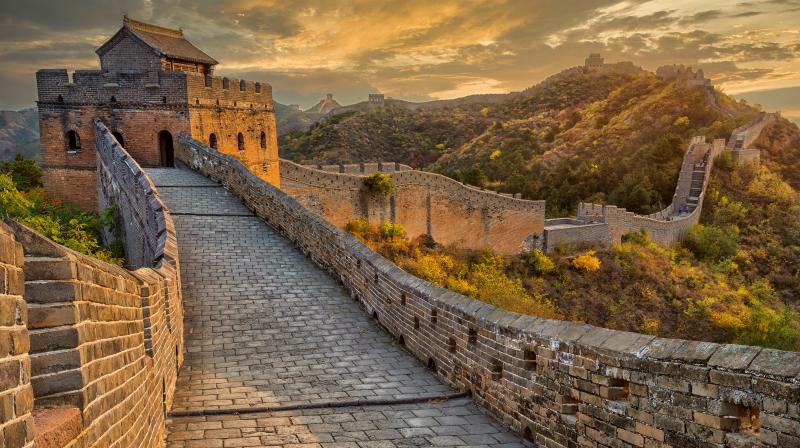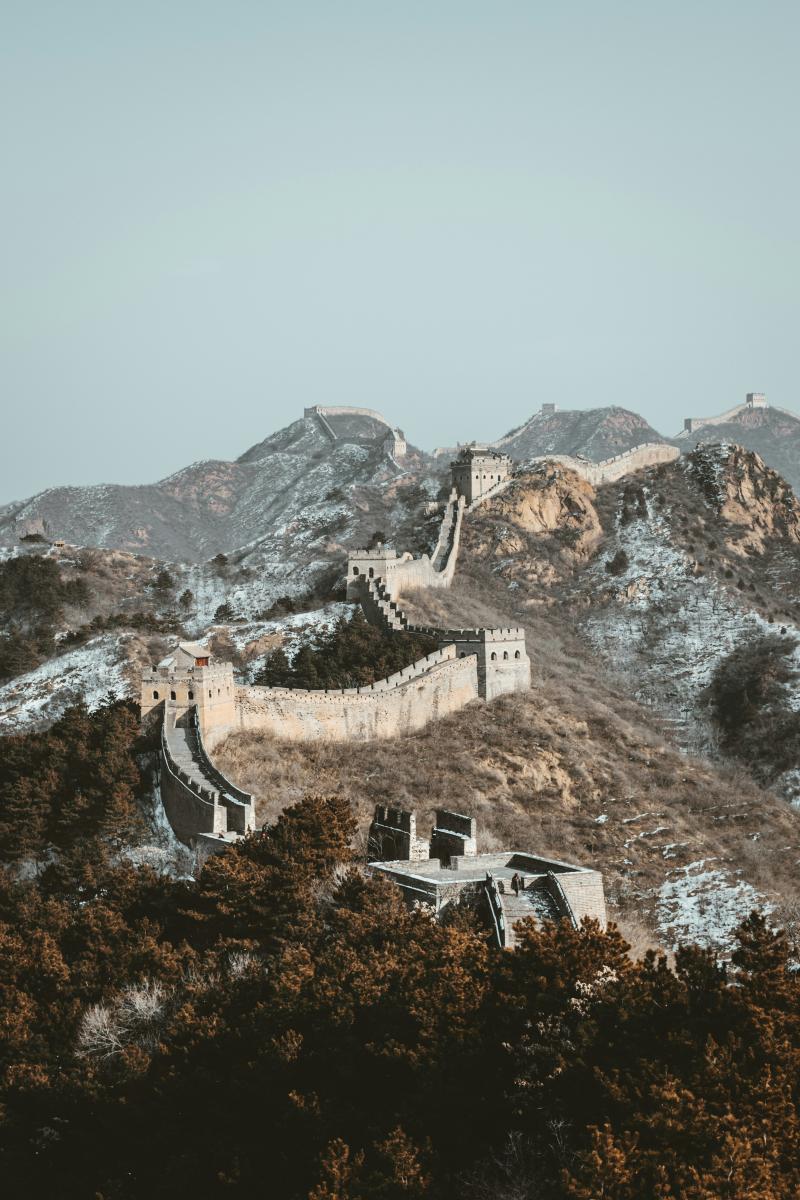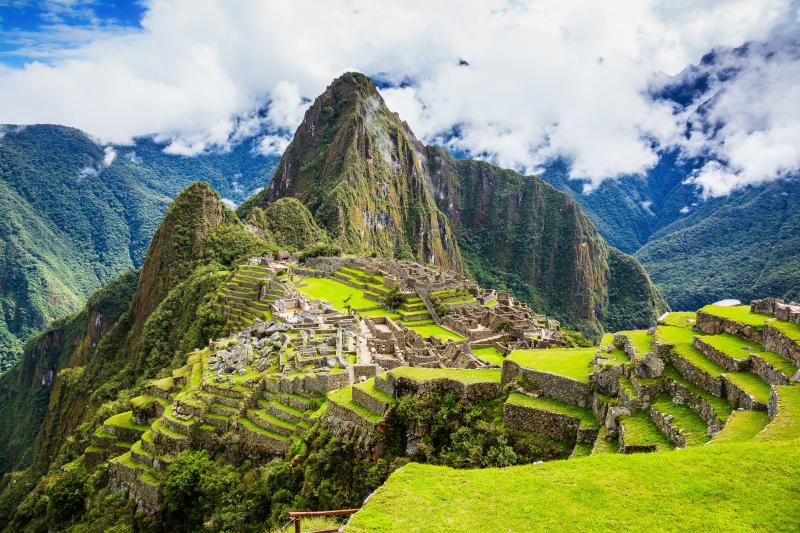View It
Visit It
Great Wall of China
China
Visit Great Wall of China
Visiting the Great Wall of China, one of the most iconic wonders of the world, is an unforgettable experience that offers not only a deep dive into China's rich history but also an incredible adventure through stunning landscapes. Stretching over 13,000 miles, from the Gobi Desert to the eastern coast, the Wall traverses a variety of terrains, from rugged mountains to remote deserts. It was originally constructed by various dynasties to protect the Chinese states from invasions and raids by nomadic groups of the Eurasian Steppe. The most famous and well-preserved sections of the Wall were built during the Ming Dynasty (1368-1644), and these are the parts most frequently visited today, such as Badaling, Mutianyu, and Jinshanling.
A visit to the Great Wall is a journey through history. Each section of the Wall has its own unique features and stories. For instance, the Badaling section, being the most popular due to its proximity to Beijing and its relatively easy walking conditions, often buzzes with tourists. In contrast, the Jinshanling section offers a more rugged, authentic experience with fewer crowds and more original architecture, including intact watchtowers and steep gradients that provide breathtaking views of the surrounding mountains. For the truly adventurous, the wild wall sections like Jiankou offer a peek into the past with their dilapidated state, presenting a stark contrast to the well-maintained stretches.
The experience of walking along the Great Wall is physically demanding yet incredibly rewarding. As you climb steep stairs and navigate uneven surfaces, the vastness and the architectural genius of the ancient builders become strikingly apparent. The views from the Wall are spectacular; panoramic vistas of rolling hills, lush forests, and distant mountains unfold in every direction, changing with the seasons. In spring, the landscape is a vibrant green, dotted with blossoming flowers, while autumn brings a fiery palette of reds, oranges, and yellows. Winter covers the Wall in a quiet blanket of snow, creating a serene and starkly beautiful scene.
Visiting the Great Wall of China is more than just a tick on a bucket list; it is an immersive encounter with history and nature, a testament to human endurance and creativity, and a connection to the past that has shaped much of Chinese civilization. Whether you are a history buff, a hiking enthusiast, or simply someone in search of awe-inspiring views, the Great Wall offers a profound and enriching experience that resonates long after the visit.
Great Wall of China Monthly Weather Conditions
LOW
TEMP
HIGH
TEMP
DAYS OF PRECIP.
January
30°F
30°F
10
February
28°F
34°F
8
March
34°F
42°F
10
April
42°F
57°F
10
May
50°F
68°F
10
June
50°F
79°F
10
July
57°F
81°F
10
August
57°F
79°F
7
September
50°F
68°F
6
October
50°F
57°F
10
November
32°F
42°F
6
December
30°F
30°F
10
Need to Know Before You Go To Great Wall of China
Find your Next Adventure in Great Wall of China
Explore Great Wall of China
- Not Visible from Space with the Naked Eye: Contrary to popular belief, the Great Wall of China is not visible from space with the naked eye. This myth has been debunked by astronauts who have been to space, including Chinese astronaut Yang Liwei.
- Longest Cemetery on Earth: The Great Wall is sometimes called the longest cemetery on Earth because an estimated 400,000 people died during its construction. Many of these workers were buried within the wall itself.
- Varied Materials: The materials used to build the Great Wall varied depending on the resources available locally. In different sections, you can find walls made of earth, wood, bricks, and stones.
- Length: The official length of all the sections of the Great Wall built over thousands of years is about 21,196 kilometers (13,171 miles), according to a 2012 survey by China's State Administration of Cultural Heritage.
- Several Dynasties: The construction of the Great Wall was not done by one single dynasty. It was built and maintained by several dynasties over centuries, starting from as early as the 7th century BC with the most famous sections built by the Ming Dynasty (1368–1644 AD).
- Originally Not a Single Wall: The Great Wall was not originally built as a single, continuous wall. It was a series of several walls that were eventually joined together to form the Great Wall we know today.
- Purpose: The primary purpose of the Great Wall was defense against invasions and raids by nomadic groups from the north, particularly the Mongols.
- Cultural Significance: The Great Wall is a symbol of China’s historical reluctance to interact with the world and a representation of the Chinese strength and perseverance.
- World Heritage Site: The Great Wall was declared a UNESCO World Heritage site in 1987.
- Popular Myth: One popular myth is that during the Ming Dynasty, glutinous rice flour was used in making the mortar that held the bricks together, giving it strength that has allowed it to stand for centuries.
Featured Picture Gallery

The Great Wall of China was Built in 220 BC

Immerse in the Nature Surrounding the Great Wall

The Great Wall of China in the Winter

The Stairs Along the Great Wall of China
Explore Similar Locations
Machu Picchu

Victoria Falls

Beijing

Uluru-Kata Tjuta National Park

